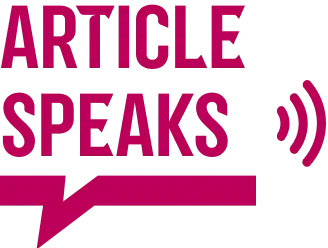Student Loan Forgiveness Paths You Might Not Expect
Lily Carter September 17, 2025
Student loan forgiveness can feel overwhelming, but unexpected options do exist. This guide explores accessible pathways, eligibility insights, and what people often overlook about managing student debt in today’s educational landscape.
Exploring Student Loan Forgiveness Programs
Student loan forgiveness is often a complex subject, but it affects millions who carry the burden of educational debt. Options like Public Service Loan Forgiveness and Teacher Loan Forgiveness have become more widely discussed, drawing attention to institutional, federal, and even employer-driven programs. Understanding how loan forgiveness functions is essential for any borrower. Not all paths require the same employment or payment history. There’s a surprising number of plans, and many go unclaimed.
Many individuals don’t realize that forgiveness opportunities are not confined to the public sector. Some private employers, especially in high-need areas like healthcare and STEM, offer unique student loan assistance programs. These can supplement federal options or stand alone, significantly reducing long-term repayment. Knowing the full scope of what exists can help shape repayment strategies and inspire more confidence when approaching debt management.
For many, eligibility criteria remain a primary barrier. Yet with changing regulations and shifting labor demands, loan forgiveness is evolving. Some newer forgiveness plans target specific shortage areas or encourage borrowers to work in underserved communities. Exploring all available programs—federal, state, private, and nonprofit—is crucial for expanding financial freedom through education.
Who Actually Qualifies for Loan Forgiveness?
Eligibility for student loan forgiveness typically depends on multiple factors—type of loan, field of work, repayment plan, and even geographic location. People in public service roles, such as government or nonprofit employees, often have access to more pathways. However, some programs extend to those working in education, healthcare, or select private companies offering student debt benefits as part of their recruitment packages. Certain income-driven repayment plans can also position borrowers to qualify for forgiveness after consistent payments over a set period.
The requirements can be surprisingly nuanced. For instance, teachers working in high-need schools can access targeted forgiveness incentives. The same goes for healthcare providers in rural or underserved areas, thanks to state and local partnerships. Some programs are aimed at those with federal direct loans, while others help graduates of specific majors. Borrowers seeking to maximize their chances should consider consolidation, reviewing loan types, and regularly updating income information with servicers.
Some individuals overlook forgiveness because of misconceptions about ineligibility. Not all programs require a spotless payment record from day one—some even allow for late or missed payments under certain conditions. Others accept partial qualifying employment or volunteer work. Navigational guides from government agencies and trusted nonprofits provide a roadmap for understanding often-overlooked details that could shift eligibility.
Income-Driven Repayment and Forgiveness Options
Income-driven repayment (IDR) plans provide more than just affordable monthly payments. After a set number of years—usually 20 or 25—any remaining balance may be forgiven. Plans like Pay As You Earn (PAYE), Revised Pay As You Earn (REPAYE), and Income-Based Repayment (IBR) offer structured pathways for long-term debt management and potential cancellation. These plans can particularly benefit those with high debt-to-income ratios, offering a strategy for balancing life expenses with educational obligations.
A key advantage lies in managing unpredictable life shifts. If a borrower’s income drops or family size increases, payments can be recalibrated, keeping budgets flexible. IDR plans also set a finite timeframe for forgiveness, an option not widely publicized. Forgiven balances may be taxable, so staying informed about related tax obligations is important for financial planning. These plans bridge accessibility gaps for many in the workforce.
Enrollment is not automatic—borrowers need to submit annual documentation verifying income and family size. Missteps in paperwork or missed deadlines can cause setbacks, so awareness is essential. Nonprofit educational resources and government websites offer step-by-step checklists and ongoing updates on forgiveness policy tweaks, helping people remain on track. These guides are valuable for anyone seeking to map their repayment journey optimally.
How State and Local Programs Change the Landscape
Many state and local governments sponsor specialized loan forgiveness or repayment assistance programs targeting critical workforce shortages. Teachers, nurses, social workers, and public defenders are among the professions frequently supported. Unique geographic incentives can include up-front repayment grants or incremental forgiveness tied to years of service. Exploring state-level resources can reveal overlooked pathways not available through the federal system.
States like New York, Texas, and California, for example, maintain robust funding for those serving vulnerable populations or contributing to economic development in distressed regions. Participation requirements may involve licensing, residency tenure, and continuous employment in qualifying roles. State educational departments and professional associations regularly update eligibility criteria, adding flexibility to evolving workforce needs.
These programs can be particularly appealing for recent graduates or those relocating. They often combine financial incentive with community impact, making them rewarding professionally and personally. By merging state and federal options, many create custom repayment plans that maximize total debt relief. Consulting with state-run education agencies or professional societies is an effective strategy for uncovering these lesser-known programs.
Potential Pitfalls and How to Avoid Them
Pitfalls in navigating forgiveness can stem from documentation errors, changes in eligible employers, or misunderstanding program rules. For example, consolidating federal loans without reviewing specific program requirements may reset previous qualifying payments, delaying forgiveness. Similarly, switching jobs outside a qualifying sector could jeopardize eligibility for future forgiveness. Timely reporting and accurate recordkeeping are vital for smooth processing.
Misinformation is another hurdle—borrowers sometimes rely on outdated advice or informal channels. Official sources such as the Federal Student Aid Office offer current instructions and direct support. Nonprofit financial wellness organizations provide unbiased clarity on application steps, qualifying loans, and documentation standards. Staying informed about annual regulatory changes can prevent disqualification and ensure debt relief progress stays uninterrupted.
Many also underestimate the importance of re-certifying income for IDR plans. Missed deadlines can lead to higher payments and lost progress toward forgiveness. Regularly reviewing loan servicer correspondence, tracking legislative changes, and joining peer support networks can provide early warning for potential policy adjustments. Attention to detail paves the way for lasting benefits.
The Future of Student Loan Forgiveness: Trends and Hope
Trends in student loan forgiveness are shaped by legislative debates, workforce needs, and growing attention to educational equity. New proposals sometimes introduce streamlined application processes or expand profession-based opportunities, especially in high-demand fields. Forgiveness is becoming not just a debt relief strategy, but a broader policy tool for economic mobility and social good.
An increased focus on STEM, healthcare, and education sectors means more targeted incentives in the pipeline. Private sector partnerships, too, offer emerging pathways, accelerating relief through direct employer payments or tuition reimbursements. Observers anticipate broader criteria and faster decision times as improvements in administrative technology mature. Staying engaged with advocacy groups and trusted public resources ensures up-to-date knowledge as policies evolve.
Looking forward, the shift toward comprehensive financial wellness—combining forgiveness, budgeting, and income support—seems poised to gain traction. Transparency in program guidelines and actively seeking out new assistance options remain key strategies. Individuals prepared to adapt to new trends are best positioned to benefit from future loan forgiveness initiatives, enjoying educational achievements without lifelong debt.
References
1. U.S. Department of Education. (n.d.). Public Service Loan Forgiveness (PSLF) Program. Retrieved from https://studentaid.gov/manage-loans/forgiveness-cancellation/public-service
2. Consumer Financial Protection Bureau. (n.d.). Repaying student debt. Retrieved from https://www.consumerfinance.gov/consumer-tools/student-loans/repay/
3. American Council on Education. (n.d.). Understanding Income-Driven Repayment Plans. Retrieved from https://www.acenet.edu/Research-Insights/Pages/Student-Loan-Debt/Understanding-Income-Driven-Repayment-Plans.aspx
4. National Council of State Legislatures. (n.d.). Student Loan and Repayment Programs. Retrieved from https://www.ncsl.org/research/education/student-loan-and-repayment-programs.aspx
5. Federal Student Aid. (n.d.). Income-Driven Repayment Plans. Retrieved from https://studentaid.gov/manage-loans/repayment/plans/income-driven
6. Institute for College Access & Success. (n.d.). State Loan Repayment and Forgiveness Programs. Retrieved from https://ticas.org/student-debt/state-loan-repayment-and-forgiveness-programs/







